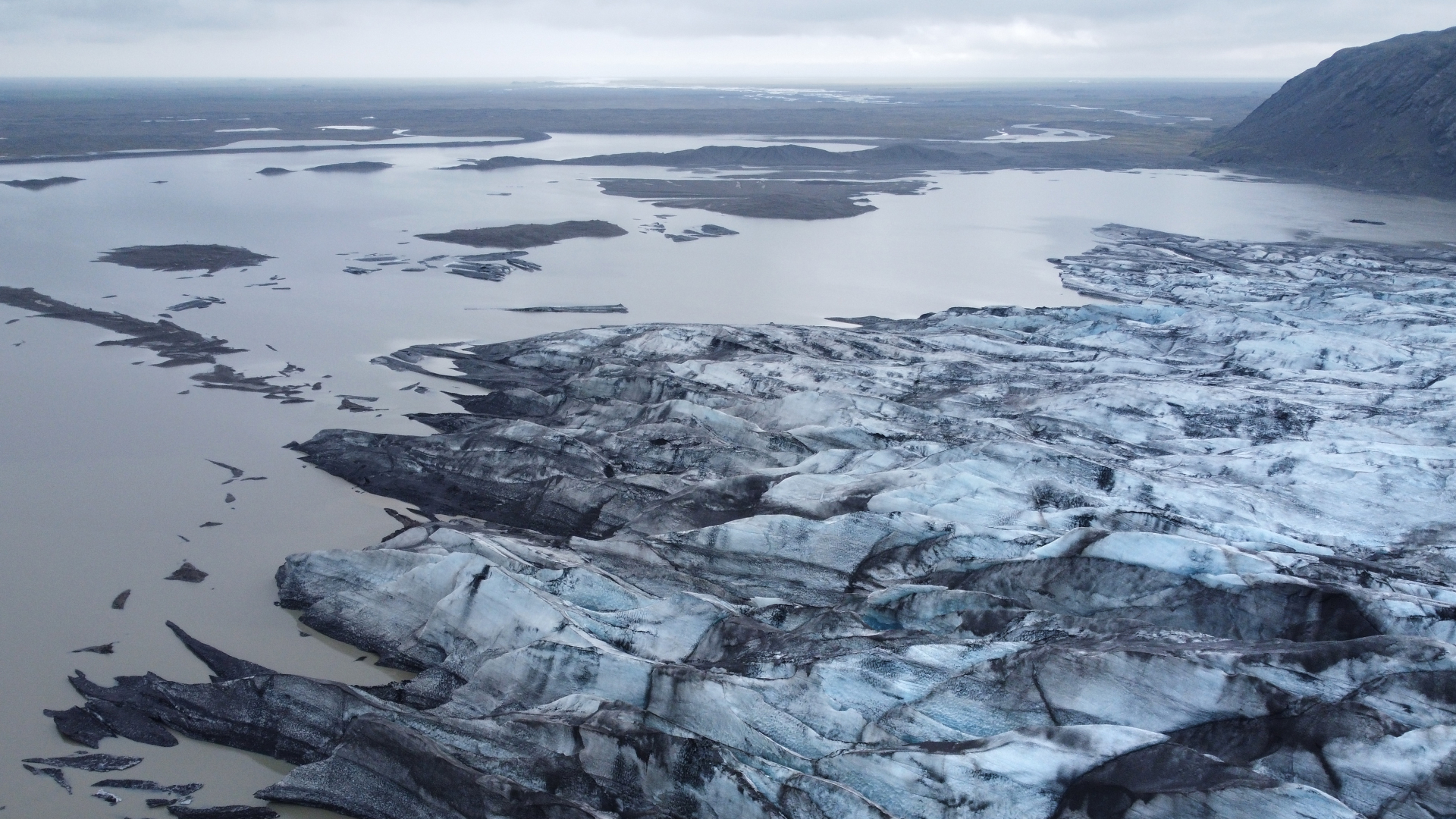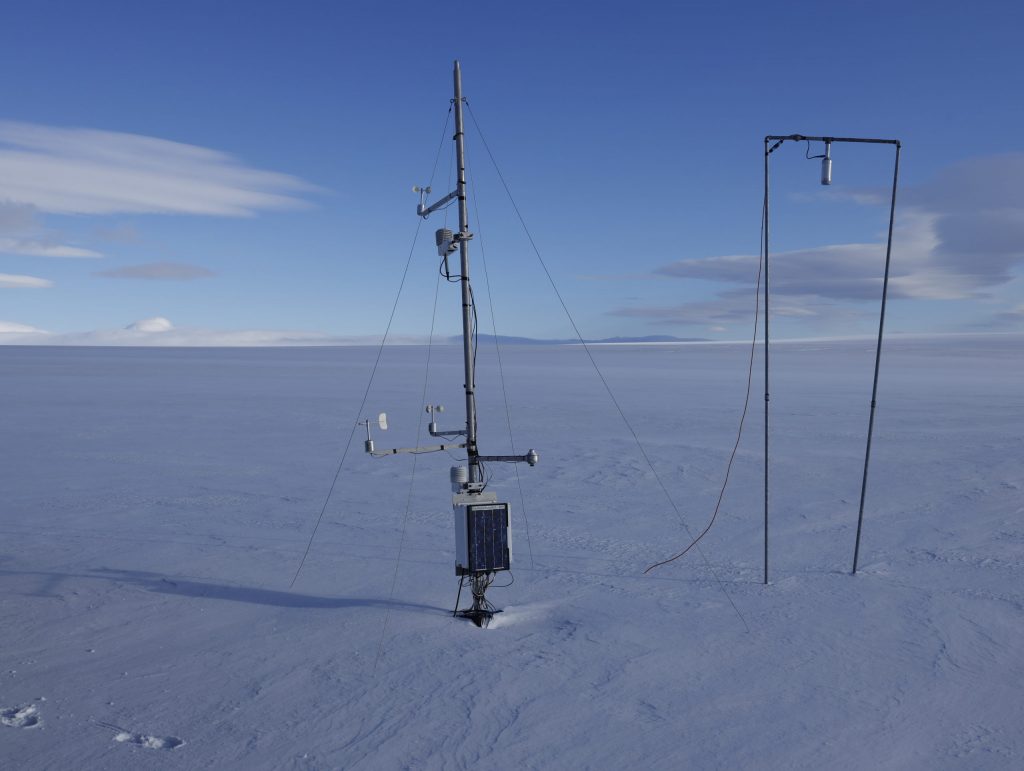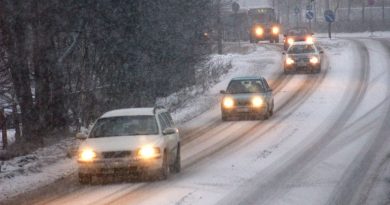Natural event seems to slow Icelandic glacier melt

A natural phenomenon appearing to cool the ocean near Iceland has likely slowed the melting of the island’s glaciers since 2011, according to new research.
Nicknamed the “Blue Blob”, this region of cooling water in the North Atlantic Ocean, located south of Iceland and Greenland, may continue to limit ice loss until about 2050.
While its origin and cause are still being investigated, researchers already know that the cold water patch chilled the air over Iceland sufficiently to slow ice loss starting in 2011.
It was most prominent during the winter of 2014-2015 when the sea surface temperature was about 1.4 degrees Celsius colder than normal. However, this trend was not seen in nearby, larger glaciers across Greenland and Svalbard, note the authors.
Using climate models and field observations, the study predicts that colder waters will persist in the North Atlantic, sparing Icelandic glaciers until about 2050, before increasing thereafter.
The authors even estimate that if no action is taken to mitigate climate change, the glaciers could lose a third of their current ice volume by 2100 and disappear by 2300. This would result in a 9-millimetre rise in sea level, warn the researchers, adding that the Blue Blob would only be a temporary respite.
“In the end, the message is still clear”, said lead author Brice Noël, a climate modeler who specializes in polar ice sheets and glaciers at Utrecht University. “The Arctic is warming fast. If we wish to see glaciers in Iceland, then we have to curb the warming.”
A mysterious phenomenon
Noël and his colleagues are still investigating the origin of the Blue Blob but other researchers already have their ideas on the subject.
They believe that it is part of the normal variability of sea surface temperature in the Arctic. They point to the particularly cold winters of 2014 and 2015 that led to record cooling even as ocean temperatures around the region warmed due to climate change.
This is not the first time researchers have observed a long-term cooling trend in the region. Over the past century, the so-called Atlantic warming hole has reduced sea surface temperatures by about 0.4 to 0.8 degrees Celsius and may continue to do so in the future.
A possible explanation for the Warming Hole is that “climate change has slowed the Atlantic Meridional Overturning Circulation, an ocean current that brings warm water up from the tropics to the Arctic, thus reducing the amount of heat delivered to the region”, reads the study.

To conduct their research published in the journal Geophysical Research Letters, the authors combined data from snow depth measurements taken between 1991 and 2019 by colleagues at the University of Iceland and satellite measurements of glacier elevation and extent taken between 2002 and 2019 by co-authors at Delft University of Technology.
“I think their analysis is very thorough”, said Fiamma Straneo, a physical oceanographer at the Scripps Institution of Oceanography who was not involved in the study. “They have a really state-of-the-art regional atmospheric model for looking at the variability of glaciers.”
Straneo believes this tool could be used to understand changes in other terrestrial glaciers, such as those in the Himalayas and Patagonia.
“There is very active research in land terminating glaciers because they are one of the largest contributors to sea level rise right now.”
Related stories from around the North:
Arctic: Ultra-cyclist rides across entire Arctic to warn of climate change, Eye on the Arctic
Canada: 30–50% of critical northern infrastructure could be at high risk by 2050 due to warming, says study, Eye on the Arctic
Greenland: Blog: Radical Arctic warming – rain, rain, here to stay?, Marc Lanteigne
Norway: Blog: Thawing permafrost: Arctic future on shaky ground bodes ill for the global climate, Irene Quaile
Russia: WMO confirms 38 C Arctic temperature record in Russia, Eye on the Arctic
Sweden: January temperatures about 10°C above normal in parts of northern Sweden, says weather service, Radio Sweden
United States: Bering Sea ice at lowest extent in at least 5,500 years, study says, Alaska Public Media
World: 2021 one of seven warmest years on record, says U.N. agency, Eye on the Arctic




while temps go up increasing ice for the next 30 years you say in the next breath the arctic is warming fast makes perfect sense who pays your funding and what happens when the Earth doesn’t follow the green agenda and goes in cycles like it always does , by 2050?
It may blow your mind but the Arctic is a large region that has many sub parts that can each have their own unique climates. So the Arctic as a whole can warm and one part can have cooling trend at the same time.
Just like you can have the weather you have and 1000 miles away there is different weather.
I though that 1000 mile apart would be different climates, and of course the weather is different in different climates.